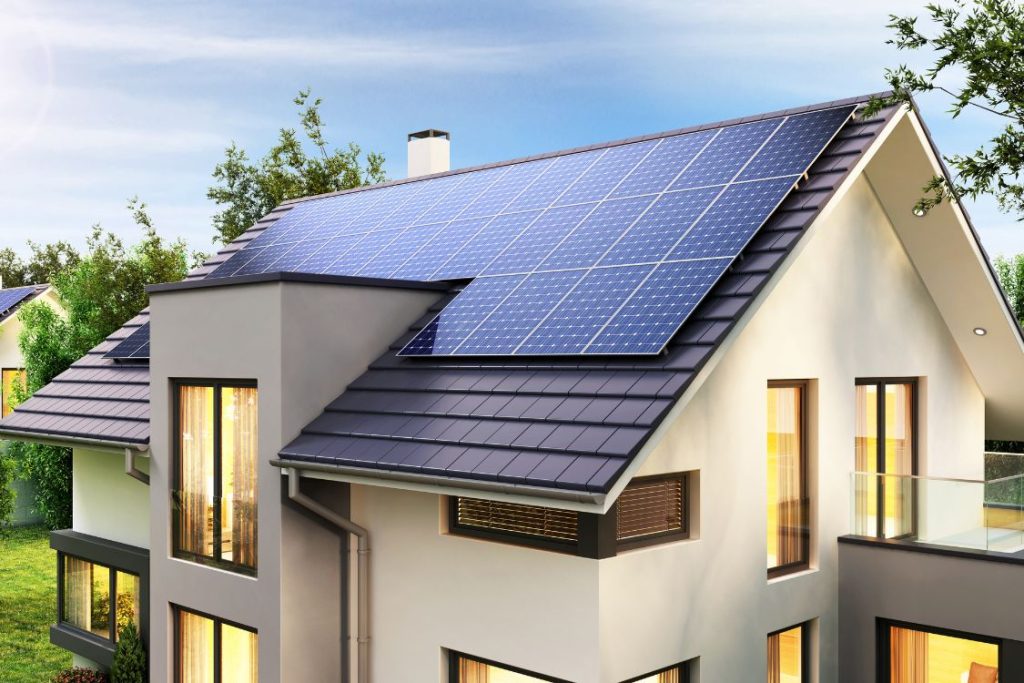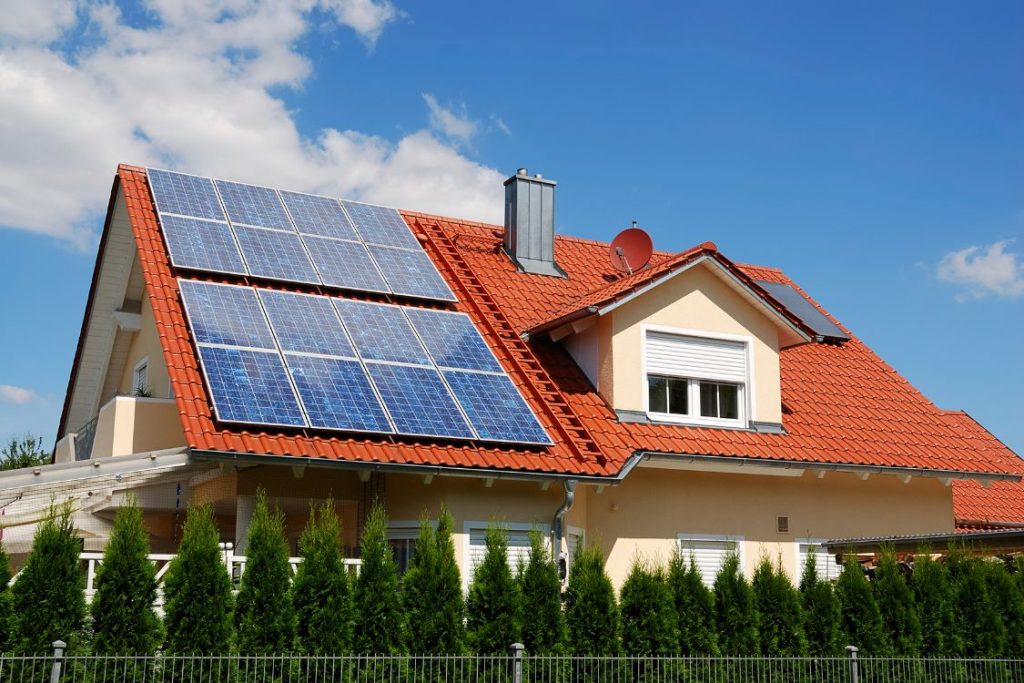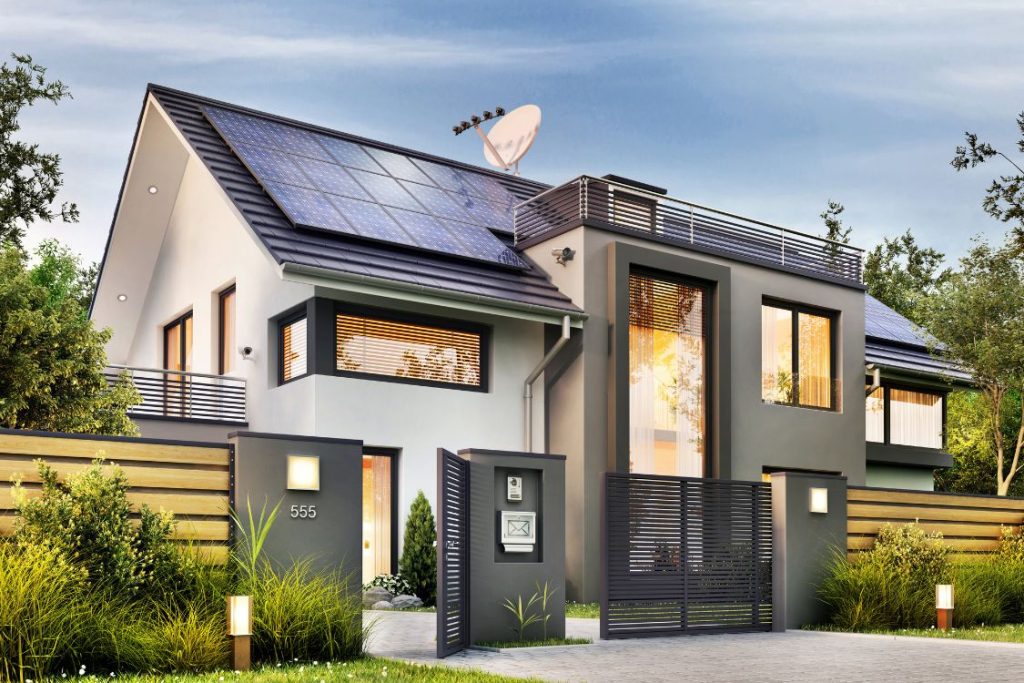Solar Panels: Maximise Efficiency and Savings

Are you looking to cut down energy bills and reduce your carbon footprint? Solar panels might just be the solution. It’s crucial to understand the types available, like monocrystalline, polycrystalline, and thin-film, each with varying efficiency and cost implications. This article will guide you through the nuances of choosing the right solar panels for your home, considering factors such as efficiency, cost, and potential savings. By the end, you’ll be equipped with the necessary knowledge to maximise both efficiency and savings. Dive in and transform your approach to energy consumption.
Understanding Solar Panels: Types and Efficiency
Monocrystalline, polycrystalline, and thin-film panels represent the primary types of solar panels, each offering distinct characteristics. Monocrystalline panels are renowned for their high efficiency, often exceeding 20%, making them the most efficient option available. These panels are crafted from a single crystal structure, which enhances their ability to convert sunlight into electricity. The downside is their higher cost, but they are ideal for residential and commercial applications where space is limited, and maximum efficiency is required.
Polycrystalline panels, on the other hand, are made from multiple silicon crystals and are less efficient than monocrystalline panels, typically achieving efficiency levels between 15% and 17%. They are more affordable and commonly used in residential installations where cost is a significant consideration, and space constraints are less of a concern. Although their efficiency is lower, polycrystalline panels still provide a viable option for many homeowners looking to reduce electricity bills.
Thin-film solar panels, the least efficient of the three types, with efficiencies ranging from 10% to 12%, are primarily used in commercial applications. Their production involves depositing photovoltaic material onto a substrate, allowing for flexibility and lightweight design. These panels can be an excellent choice for large-scale installations where space is not a limitation, and the lower efficiency is offset by the reduced material and installation costs.
The significance of efficiency in choosing solar panels cannot be overstated. Efficiency determines how much electricity a panel can produce from a given amount of sunlight, directly impacting energy savings and return on investment. Higher efficiency panels like monocrystalline are preferable in situations with limited roof space or high energy demands. In contrast, lower efficiency panels might suffice for larger areas or where the budget is restricted. By understanding the efficiency and typical uses of each panel type, one can make an informed decision tailored to specific energy needs and financial considerations.
| Type of Solar Panel | Efficiency | Typical Use |
| Monocrystalline | >20% | Residential and commercial installations with space constraints |
| Polycrystalline | 15%-17% | Residential installations where cost is a concern |
| Thin-film | 10%-12% | Commercial applications requiring flexibility and lower cost |
The Cost of Solar Panels and Installation in the UK
A solar panel system for a typical three-bedroom house in the UK ranges between £5,000 and £8,500. How much does a solar panel system cost for an average UK home? The cost is influenced by various factors such as the size and capacity of the system, the type of solar panels chosen, and the complexity of the installation process. A standard system typically includes panels with a total capacity of around 4kW, offering a balance between initial cost and potential savings on electricity bills. This average cost reflects the investment required to achieve energy independence and reduce carbon footprint in the long term.
What additional factors influence the cost of solar panel installation in the UK? Beyond the basic system setup, additional components and regional factors significantly impact the overall expense. For example, solar batteries, which allow for energy storage, can add between £2,500 and £10,000 to the total cost. The need for specific mounting solutions, such as for flat roofs, or pigeon-proofing measures, can also increase expenses. Furthermore, labour costs can vary depending on the location, with urban areas often incurring higher charges than rural ones. These factors must be considered when budgeting for a solar panel installation to ensure an accurate financial plan.
- System size and capacity
- Type of solar panels
- Installation process specifics
- Additional components (batteries, mounts)
- Regional labour costs
Benefits and Savings from Solar Panels

What are the potential savings with solar panels in Scotland? Average annual savings for a 4kW solar panel system are approximately £660. By generating electricity from sunlight, homeowners can significantly reduce their reliance on conventional energy sources, leading to lower utility bills. Over time, these savings can offset the initial installation costs, making solar panels a financially attractive investment.
How do solar panels impact the environment? Solar energy for homes reduces carbon emissions and reliance on fossil fuels. By harnessing renewable energy, solar panels contribute to a cleaner, more sustainable environment. This shift not only aids in combating climate change but also promotes energy security by diversifying energy sources.
What is the concept of energy independence in relation to solar panels? Energy independence is achieved when homeowners can meet most or all of their energy needs through self-generated power. The Smart Export Guarantee (SEG) facilitates this by allowing users to sell surplus energy back to the grid. This not only maximises savings but also provides a financial incentive for producing excess renewable energy, further enhancing the return on investment and encouraging sustainable energy practices.
Solar Panel Installation: Process and Considerations
How long does the solar panel installation process take? The installation process usually takes up to six weeks from the initial inquiry to completion, with the actual installation lasting four to five hours. The timeline includes various stages such as consultation, site survey, and obtaining necessary approvals. During the consultation phase, professionals assess the suitability of the property and discuss the potential benefits and savings of solar panels. The site survey evaluates the structural integrity of the roof and determines the optimal positioning for maximum sun exposure. Once the survey is completed, the installation is scheduled, and the panels are fitted within a few hours, ensuring minimal disruption to the household.
What are the key procedural steps in solar panel installation? Initially, a home survey is conducted to verify system suitability and to design an efficient layout tailored to the specific property. Following this, an engineering team will draft a plan considering factors such as roof orientation and shading. South-facing roofs are preferred for maximum efficiency, but east or west-facing roofs can also be viable with some reduction in output. Planning permission is rarely required unless the property is a listed building or in a conservation area. After approvals, the installation team mounts the panels and connects them to the electrical system, followed by a thorough testing phase to ensure everything operates smoothly.
Key considerations for solar panel installation:
- Orientation and shading of the roof
- Structural integrity of the roof
- Local council requirements
- Integration with existing systems
Government Incentives and Grants for Solar Panels
What government grants for solar panels are available in the UK? Various grants and schemes are designed to reduce the initial cost of installing solar panel systems, thereby encouraging the adoption of renewable energy. The UK government offers financial support through initiatives like the Green Homes Grant and the Renewable Heat Incentive, which help offset the upfront expenses associated with solar installations. These programmes aim to make solar energy more accessible by providing partial funding for purchasing and installing solar panels. By lowering financial barriers, these grants not only promote the use of renewable energy but also support the government’s goal of reducing carbon emissions.
How do solar panel incentives further lower costs? The Smart Export Guarantee (SEG) is a key incentive that offers financial benefits by allowing homeowners to sell excess energy generated by their solar panels back to the grid. The SEG ensures that households are compensated for surplus electricity, providing a monetary return that can significantly aid in recouping the initial investment over time. This scheme motivates homeowners to maximise their solar energy production, ensuring that any excess electricity contributes to the national grid while also delivering a financial boost to the household. By offering such incentives, the government makes solar energy a more attractive and economically viable option for more residents.
Selecting the Right Solar Panels for Your Home

What factors should be considered when selecting solar panels? The most critical factors are efficiency, cost, roof space, and energy needs. Monocrystalline panels are the best choice for those prioritising efficiency, as they deliver the highest output per square metre, making them ideal for properties with limited roof space. These panels, while efficient, are more expensive, making them suitable for homeowners with a substantial budget who seek maximum energy production. Polycrystalline panels, on the other hand, offer a more cost-effective solution with a slightly lower efficiency range. These are suitable for larger roofs where space isn’t as constrained, allowing for more panels to be installed to meet energy needs. Evaluating your home’s energy demand can help determine the number of panels required, ensuring the selected system effectively meets your energy consumption while aligning with your budget and spatial limitations.
Maintenance and Longevity of Solar Panels
What is the typical lifespan of solar panels? Solar panels usually last about 25 years with minimal maintenance. This longevity is attributed to their robust construction, allowing them to withstand various weather conditions while continuing to produce electricity efficiently. Regular maintenance can further extend their lifespan and maintain their effectiveness.
What maintenance is required for solar panels? Maintenance tasks are generally straightforward, involving periodic cleaning and inspections. Panels should be kept free of debris and dirt, as these can obstruct sunlight and reduce efficiency. It is also essential to inspect the panels for any physical damage, particularly after severe weather events, to ensure all components are functioning correctly.
How often do inverters need replacement? Inverters, which are crucial for converting solar energy into usable electricity, may require replacement approximately every ten years. Keeping track of inverter performance is critical, as a malfunctioning inverter can significantly impact the overall system efficiency. Ensuring proper maintenance of both panels and inverters maximises the return on investment and maintains energy savings over the solar panel system’s lifespan.
Final Words
Understanding solar panels involves recognising the types and their efficiency levels. Monocrystalline panels offer maximum efficiency at a higher cost, while polycrystalline options present a more affordable, albeit less efficient, choice. Thin-film panels are primarily for commercial use due to their reduced efficiency.
In the UK, solar panel installation costs vary, influenced by system size, type, and additional components. Financial and environmental benefits include the Smart Export Guarantee, enhancing savings. Proper installation considers roof orientation and structural integrity.
Government incentives assist with initial costs, making solar energy viable for many. Maintenance ensures a lifespan of around 25 years, supporting sustainable energy solutions. Solar panels represent a promising investment in cleaner energy and cost savings.

Angela is a writer focused on the intersection of climate change and public health. Her work explores the impacts of environmental shifts on well-being, aiming to raise awareness and provide practical insights for a healthier, more sustainable future.
